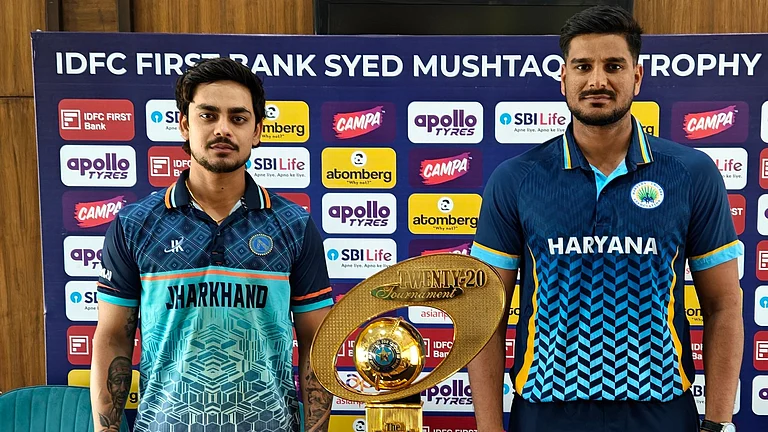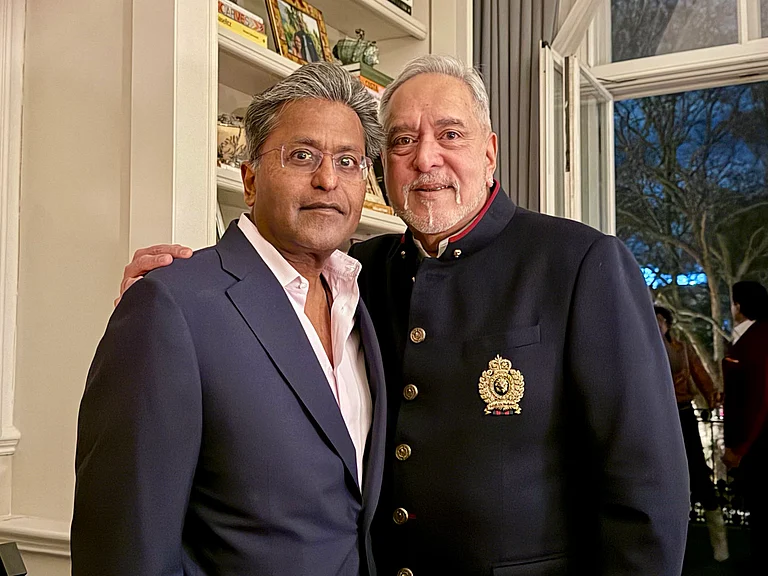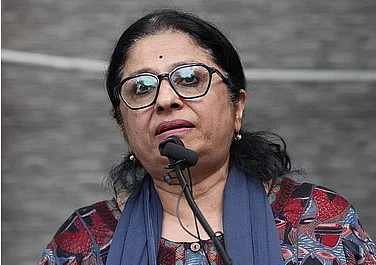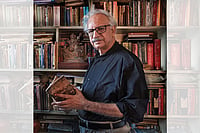Ashok Kumar Jha, widely recognised by his pen name ‘Ashok’ and ‘Kathakar Ashok’ is a prominent figure in Maithili Literature. His reputation primarily stems from his exceptional contributions to the world of Maithili stories, many of which have been translated into multiple languages.
Born on January 18, 1953, he completed his career successfully as a Joint Registrar with the Bihar Co-operative Service. Ashok is a versatile writer who explores multiple genres. Through his writings, he delves into profound analyses of diverse subjects such as social issues, cultural traditions, economic factors, demographic settlement, linguistic nuances in literature, and the very essence of the literary world itself.
Ashok has authored a poetry collection titled ‘Chakravyuh’ and three collections of short stories titled ‘Ohi Raatik Bhor’, ‘Maatbar’, and ‘Daddy Gaam’. Furthermore, he collaborated with two other writers on a joint short story collection called ‘Trikon’. In addition to fiction, he has penned two collections of essays ‘Maithil Aankhi’ and ‘Katha Path’ along with a critical work titled ‘Baat Vichar’. His literary pursuits extend beyond creative writing. Ashok has also explored travelogue writing with ‘Aankhi Mein Basal’, a reflection on his experiences in the Soviet Union during 1985.
Ashok has delved into the study of early Maithili novels in his work ‘Kathak Upanyas: Upanyasak Katha’. Notably, Ashok has contributed to the literary world as an editor, overseeing two books ‘Samvaad’ and ‘Pratiman’, in addition to his involvement with the magazine ‘Sandhaan’. He is also known for his column ‘Thain Pathain’, which was published in Dainik Hindustan and later compiled into a volume titled ‘Neek Dinak Bioscope’. Ashok’s dedication to promoting Maithili literature is evident through his role as the convener of the Maithili Literature Festival held in Patna twice in 2014 and 2016.
Ashok’s remarkable literary achievements have earned him prestigious accolades such as the Yatri Chetna Samman, Kiran Purashkar, and various other literary awards bestowed upon him by esteemed literary institutions. Additionally, he has authored a monograph on Rajmohan Jha for the Sahitya Akademi, further solidifying his legacy in the realm of Maithili literature. Ashok spends his time in Patna and his native place Lohna Tol, Madhubani with his family and literary fraternity.
Ashutosh Kumar Thakur speaks to Ashok about his works, life, and wide range of Maithili literature to its glory, opportunity, and challenges:
Can you tell us about your journey as a writer in Maithili? What inspired you to write in Maithili?
I started writing poetry when I was studying in school, My father Late Umapati Jha was the Manager of the Ram Temple in Kashi (Varanasi) made by Maharani of Darbhanga Lakshmivati. The whole family was living there. In that temple, various literary activities and anniversaries of litterateurs used to happen which were organised by the ‘Maithil Student Union’. There were discussions all the time about Maithili and Mithila. It was due to the impact of that environment that I too started writing and reciting poems in such gatherings. My first poem was published in a children's magazine called ‘Batuk’. That poem was written about the early modern poet of Maithili named Chanda Jha. It was titled ‘Shashi Chanda Ke Saman’. After that, I wrote poems and published them in ‘Mithila Mihir’. My literary journey started with poetry writing like that. After that, I started writing short stories as well. I showed my stories to Dhirendra, a famous litterateur from my village and he said, “It is not a proper story. Do not write stories, you write poems well, you keep writing that.”
I felt disappointed with his words and tore down all my stories, but his words kept lurking in my mind as a challenge. I tried again after some days and wrote a story. When I met him, I showed it to him. He read that as said, “Yes, this is a proper story. It’s perfect. Send it to ‘Mithila Mihir’ for publication.” That story, ‘Viram san Pahine’ was published in ‘Mithila Mihir’ in 1971.
After that, I started writing short stories and they started getting published. After 1980, the readers started recognising me as a short story writer. I also started writing criticism after 1990. A book came on the critical study of the early novels of Maithili. I have also written the history of the Maithili novel recently. Apart from poems and stories, a travelogue named ‘Aankhi Mein Basal’ also got published, based on my journey to Moscow in the year 1985.
Could you enlighten us briefly about the key historical milestones in the development of Maithili literature and how have they contributed to its cultural significance?
The research on the works of the great poet Vidyapati and the controversies related to their language that started at the end of the 19th century and the beginning of the 20th century awakened affection and awareness about Maithili literature among the Maithil society. There was a major contribution of George Abraham Grierson and the Bengali intellectuals in that. Maithili magazines started getting published in 1905. It contributed a lot to the development of literature. Poems, short stories, and novels began to be published.
Recognition from Sahitya Akademi, the establishment of Maithili Akademi, and the activities of various Maithili organisations helped in the creation of high-quality works in Maithili literature. Important books of ancient, medieval, and modern literature of Maithili came in front of the readers. There was a spread of cultural consciousness due to that. The Maithili speakers who went to different cities to live in the whole country started celebrating Vidyapati Parv after making their organisation. The culture of Mithila and Maithili Literature started getting promoted through that. Through this, theatre, songs, book publications, display of different artistic things, etc started to develop.
After the literature of Vidyapti, the literature of Harimohan Jha and Nagarjun also gave Maithili recognition all over India. It awakened the consciousness in the Maithili society. With that Kanchinath Jha ‘Kiran’ also promoted language and culture and helped in the awakening by celebrating Vidyapati Smriti Diwas in villages through Vidyapati-Gosthis. In 1954, Yatri (Nagarjun) established Chetna Samiti in Patna, which is the topmost organisation of Maithili today. Various literary and cultural events, published books, and social activities have been happening in this organisation all over the year. Sahitya Akademi and other Maithili Language organisations give various honours and awards so that the poets and writers keep getting the encouragement to write. The impact of this environment was such that books started getting published which were literarily and culturally important.
Your Maithili stories have earned extensive acclaim. Your literary evolution is infallible in narratives in the stories 'Derbuk’ ‘Mirza Saheb,' 'Daddy Gaam,' and 'Ohi Ratik Bhor,' among others. Could you delve into the evolving themes within your Maithili stories and their significance?
Whenever a thought, incident, situation, or experience agitates me, it becomes a part of my mind. I keep thinking about that. The duration of thinking can be between a month to a year. The beginning and the ending of the story are also created in the mind to some extent. Sometimes the ending also changes after the beginning of the writing process.
At many times, the narrative style of the story changes according to the subject and the context. As far as the stories you have mentioned, they express the fear, expectations, attraction in the personality, and the immediate impact of the incidents that have happened. That shows the harmony along with the communal hatred spread in the society. It reveals the attraction of people toward their culture, their roots, and the attempt to do something meaningful in the globalisation of the current time.
There have been ups and downs in the country and the society from time to time. As a result, people become angry and indulge in anti-social activities, but in the end, their conscience makes them aware of the actual situation. In these stories, I have creatively expressed this reality and consciences related to society.
Your Stories collections ‘Ohi Raatik Bhor’, ‘Maatbar’, and ‘Daddy Gaam’ received critical acclaim. Can you give us a glimpse of these works and what you aimed to convey through them?
My first short story ‘Viram san Pahine’ (Before the Break) was published in ‘Mithila Mihir’ in 1971. The first short-story collection ‘Ohi Raatik Bhor’ was published in 1991. ‘Maatbar’ in 2001 and ‘Daddygaam’ in 2017. I am trying to awaken the wisdom of good and bad in the individual and the society through my stories. The wish to see a complete human being in a society and establishment filled with vitality by rising above the differences of caste and religion is seen through my stories. The differences and the inequality in society have been agitating me, which is why its narrative expression can be seen in my stories.
The short story collections, ‘Ohi Raatik Bhor’, ‘Maatbar’, and ‘Daddy Gaam’, have been written over the duration of 45 years. During this period, many things in the country and the world have changed rapidly. Some good things have happened and some bad. We have become economically strong but have become socially and culturally weak. The mentality of caste and religion has been strongly rising. Untouchability is still effective in a different form. Hatred and enmity are increasing. But even in this negative environment we sometimes see some beautiful, positive steps. There are many people in the world whose dreams about how this world can become beautiful are not dead. Looking at and experiencing these thoughts, the storyteller inside me has presented these situations and conditions using the required form and content.
Your storytelling is celebrated for its profoundness and meticulous character development. Can you elaborate on your approach to crafting the ‘magic realism’ within your narratives and shaping your characters?
I see the presence of such characters in the social establishment, and to characterise them and reveal their psychology in my stories, I am required to change the method of expression. That is why, to show the truth of the minister, the officer, and those who believe in casteism, those who spread hatred among Brahmins and Dalits in stories such as ‘Kotha’, ‘Daskhat’, and ‘Sanesh’, I expressed that using snakes, dismembered thumb, etc. You can call that magic realism.
Understanding the character of people has become difficult in contemporary times. You can’t know what kind of person they are. These kinds of people can be found more in the so-called cultured group. To reveal the mystery of the characters of such complicated people and to express these realities you need new narrative devices and provisions. The folk-narrative world that is with us and the field of experience that we already have can be used.
Could you share some insights into your writing process? Do you have any specific habits or research practices that help you in your creative work?
I write a work only when it becomes necessary to write it. For that, I prepare myself mentally to the fullest. I collect all the required information related to any ritual, place, occupation, education, etc related to any incident or character if I need to present them in my story. However, most things are related to the range of my experiences only. The impact of that experience and the thoughts that are generated from those experiences become the content of my story. The form also comes naturally with that. That is why, in all my stories, the form also changes according to the content.
You’ve explored various genres, including literary essays and criticism. How do you approach these different forms of writing compared to your creative works as a fiction writer?
I first started writing poetry and then stories. When people and readers started recognising me as a poet and as a story-writer, the famous story writer Rajmohan Jha and critic Mohan Bhardwaj started encouraging me to write essays. Mohan Bhardwaj told me that writing essays is important for the formation of the personality and to recognise the social-cultural development through the medium of literature. When I moved towards writing essays and critiques, I needed to read a lot of books. I had to understand the definitional dictionary of criticism. Writing criticism also influenced my fiction writing. To continue them together has become a challenge. However, the story and criticism are going side by side. I have stopped writing poetry though. Now I am not able to write poems. My critical writing has become simple and readable due to both creative and critical prose writing. Anyways critical writing is now considered as a creative genre.
Can you provide insights into some remarkable Maithili literary works and authors who have made substantial contributions to Indian literature? Additionally, could you discuss the importance of translating these works into English and other major languages to make them accessible to a larger audience?
In these 100-125 years, many important books have come. That is in different genres. Harimohan Jha’s ‘Khattar Kakak Tarang’ (satire), Yatri’s ‘Chitra’ (poetry collection), ‘Paro’ (novel), Manipadma’s ‘Naika Banijara’ and ‘Dulara Dayal’ (novel), Rajkamal Chaudhury’s ‘Sanjhak Gaachh’ (short story collection), ‘Kavita Rajkamalak’ (poetry collection), Dhumketu’s ‘Udyast’ (short story collection), ‘Mod Par’ (novel), Lilli Ray’s ‘Marichika’ (Novel), ‘Rangeen Parda’ (short story collection), Charndranarayan Mishra’s ‘Baladitya’ (novel), Jeevkant’s ‘Agirbaan’, Rajmohan Jha’s ‘Ekta Tesar’ (short story collection), Kulanand Mishra’s Aab Aagan Sunu (Poetry Collection), Subhash Chandra Yadav’s ‘Ghardekhiya’ (short story collection), ‘Gulo’ (novel), Usha Kiran Khan’s ‘Haseena Manjil’ (novel), Mohan Bhardwaj’s ‘Daak Drishti’ (critcism), Harekrishna Jha’s ‘Ena ta Nahin Je’ (poetry collection), Shivshankar Shriniwas’s ‘Gaamak Lok’, ‘Gun Katha’ (short story collection), Pradip Bihari’s ‘Mrityu Leela’ and ‘Koikh’ (novel), Vidyanand Jha’s ‘Danufak Fool Jakan’ (poetry collection), Haridas’s ‘Janam Jua Mati Harahu’ (autobiography), and Taranand Viyogi’s ‘Pralay Rahasya’ (poetry collection) and Tumi Chir Sarthi (memoir) etc are some books that can be considered as an important contribution to Indian literature.
Readers of other languages can get a qualitative introduction to Maithili literature if these works are translated into English and other Indian Languages. The English translation of the novels of Manipadm that are based on folk narratives will bring a strange and magical world in front of readers belonging to other languages. The distinctiveness of Maithili literature has not come in front of quality readers due to the lack of English translations. Even Hindi translation is not happening that much. We see that the stories that are translated into Hindi start getting translated into other Indian languages automatically. Our stories have also been translated into other Indian languages like that.
In ‘Kathak Upanyas: Upanyasak Katha’, you delve into the study and writing of Maithili novels. What drew you to this area of research, and what did you discover during your exploration?
‘Kathak Upanyas: Upanyasak Katha’ is a critical reading of the early novels of Maithili. The novels published till 1948 have been kept in this. This has been written for the lecture series of Maithili Akademi. I presented the study so that we can understand the main creative trends of the early novels. I found that there was a trend of social change and didacticism in most of the novels. Along with that, the other trend is to present a realistic portrayal of contemporary realities. We don’t find the third trend which is the use of history and mythology for the development of social consciousness the way other Indian novels used to do in the early novels of Maithili.
The tragic description of the bad condition of women of Mithila’s Brahmin community is there in the early novels. Each Brahmin used to marry 10-20 times in society divided into castes and sub-castes. Old men used to marry extremely younger women. Many women used to get widowed with the death of one man. The early Maithili novels are filled with the tragic tales of many such mistreated women. In the early Maithili novels, Yatri’s ‘Paro’ can be seen with the view of the individual liberty of women, and Janardhan Jha ‘Jansidan’s’ and ‘Nirdai Saas’ can be seen as a tussle between mother-in-law and daughter-in-law amidst traditional values and new progressive values. The lack of women’s education is underlined in Harimohan Jha’s ‘Kanyadan’. Many early novels bring the social condition of that time in front of us.
Could you provide an overview of the status of women, Dalit, and minority writings in Maithili literature, considering both their numerical representation and the impact of their contributions?
The condition of women writing in Maithili is satisfactory. There has been both quantitative and qualitative increase in it after the Independence. But the Dalit and minority writings are in their infancy. There is an increase in their activities but not much writing is happening. However, some writers have raised their voices. In women’s writing, the short stories and novels by Liliey Ray, Usha Kiran Khan, Nirja Renu, Vibha Rani to Abhilasha have expressed the freedom and conscience of women through their stories and novels. The involvement of women has increased in all genres of literature in this century.
Dalit and minority writings have not developed in that manner. Although the Dalit point of view can be seen in the works of Mahendra Narayan Ram, Taranand Viyogi, Ramkrishna Pararthi, Umesh Paswan, Raghunath Mukhiya, Pritam Nishad, etc. Poets and writers like Manjar Suleman, Mukhtar Aalam, and Gufran Aajam present the minority view. Apart from that a large group of writers from backward castes have come including Jagdish Prasad Mandal, Ram Vilas Sahu, Umesh Mandal, etc as well as writers from Nepal are also there. These writers have integrated a larger community with the Maithili literature through their works and activities.
In contemporary Maithili literature, how does it measure up in terms of diversity and depth when juxtaposed with literature in other Indian and world languages? Does it encompass themes such as the urban landscape, geopolitics, feminism, subaltern consciousness, and environmental discourse? Kindly enlighten us with your brief remarks.
A lack of variety and depth can be seen in the contemporary Maithili literature in comparison to other Indian and world Languages. We can see the presence of urban landscape, feminist discourse, subaltern consciousness, and environmental discourse in the poems, short stories, and novels only in recent times. Even now, literature in Maithili is hesitating to break its geographical boundaries. But one thing has surely happened. It has started expressing the various human concerns of the world even while existing within its geographical landscape. The are many works written in Maithili on various questions of contemporary times such as the erosion of humanity, social inequality and disparity, women’s rights, along with the change in the system, and communal and caste hatred and violence. The young writers are more alert in this direction. Some such novels like ‘Allah ho Ram’, ‘Laltenganj’, ‘O je Kahoyo Gaam Chhal’, ‘Kalash-Yatra’, ‘Kaniya Ek Ghunghroowali’, etc are there, in which female consciousness, subaltern consciousness, and communal harmony have been emphasised.
In your view, what are the major challenges and opportunities for the growth and preservation of Maithili literature, especially in the context of the digital era, changing publication trends and readership habits?
Contemporary readers are gaining intellect in various ways. The treasures of knowledge and information have kept opening in front of them. The readers want to read a work that gives some new object or vision in the form of aesthetics or knowledge. If we look at it from that point of view then there is a lack of such publishers who can publish and distribute books according to the interest of the readers. The Maithili book market has not been established for that reason. In that condition, Maithili is staying alive due to the creative hunger of the writer and the publishing and distribution of books using their resources. That is why keeping the development of literature in vision, Maithili must get a strong publisher.
When can we anticipate the release of a novel by Kathakar Ashok? This is a question that has been consistently asked by your avid readers.
I have been wanting to write a novel for many days. There is pressure from my friends and many readers. It seems I have to write a novel now. I will try to publish a novel next year.
What advice would you give to young authors who wish to write in Maithili?
Both the lack and pressure of time are problems in front of young writers. It seems that they should organise their life a bit more and attempt to write in Maithili. Along with that, it is also important to keep expanding their emotional space through study and travel. For that, young writers have to manage their time properly.
Thank you for taking the time to share your insights and experiences with our readers!
(Ashutosh Kumar Thakur is a Bengaluru-based management professional, curator, and literary critic. He can be reached at ashutoshbthakur@gmail.com.)

























